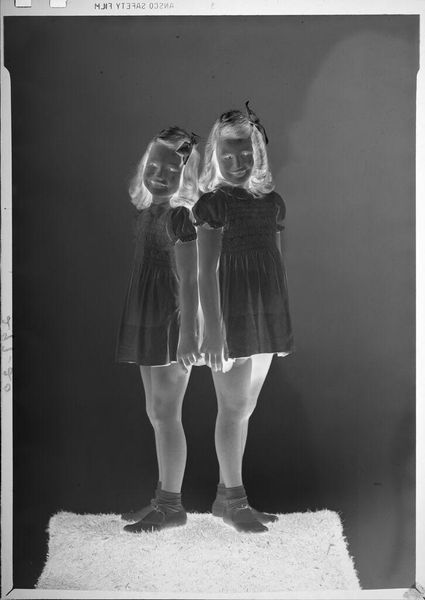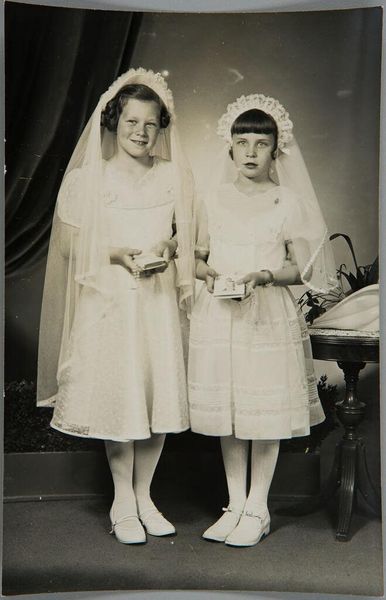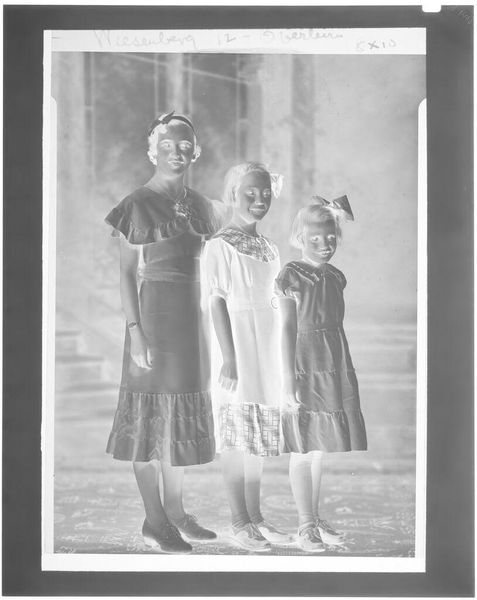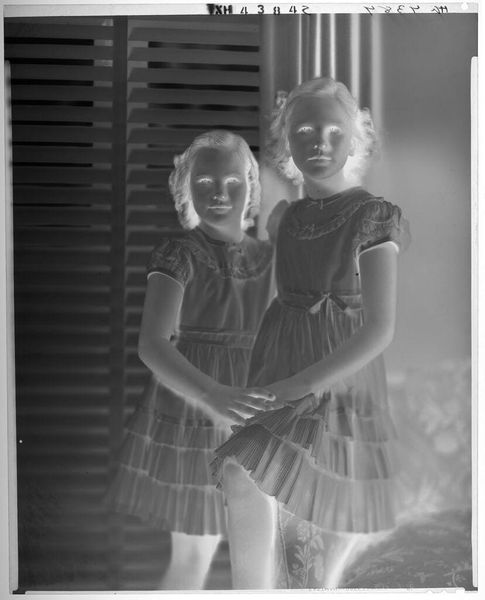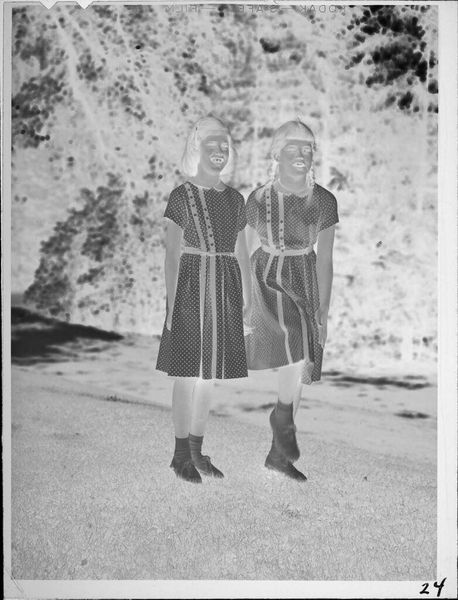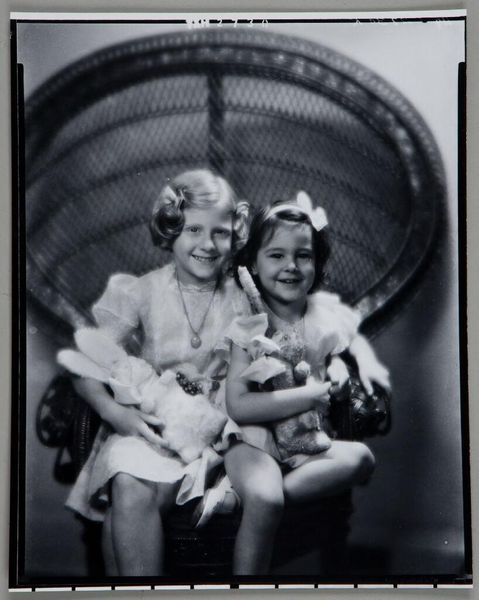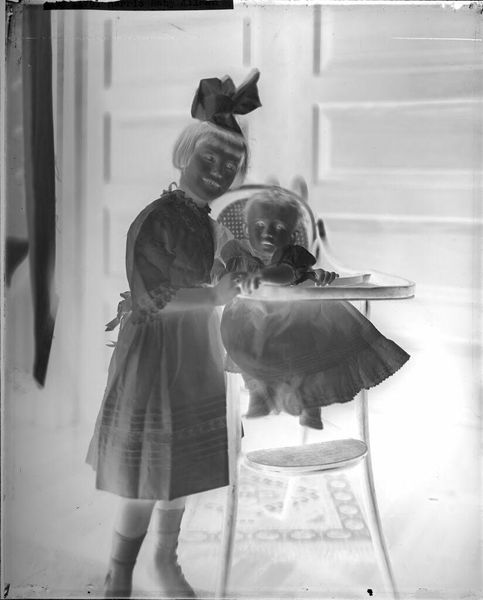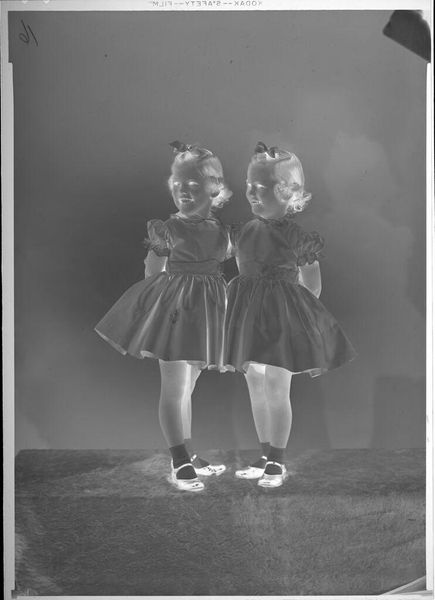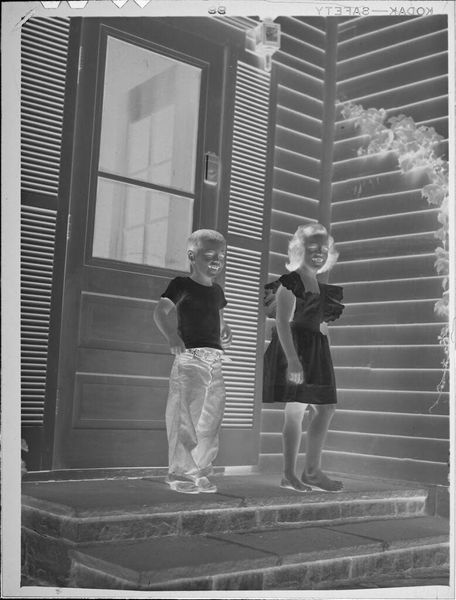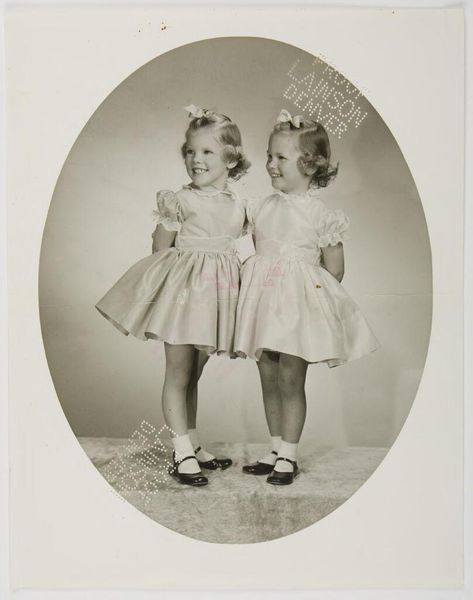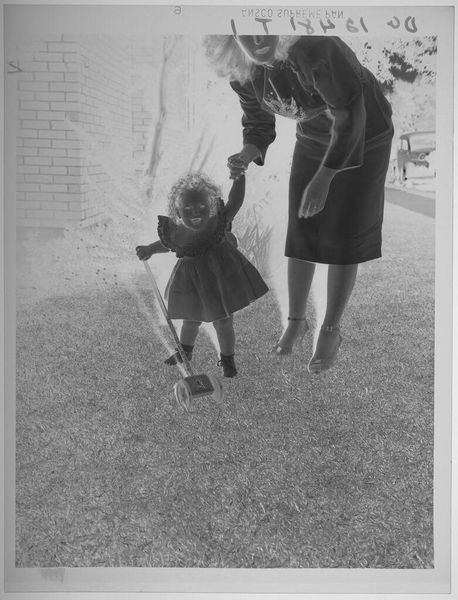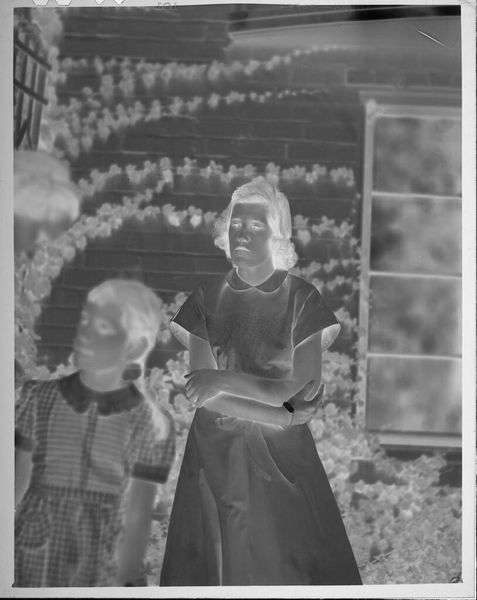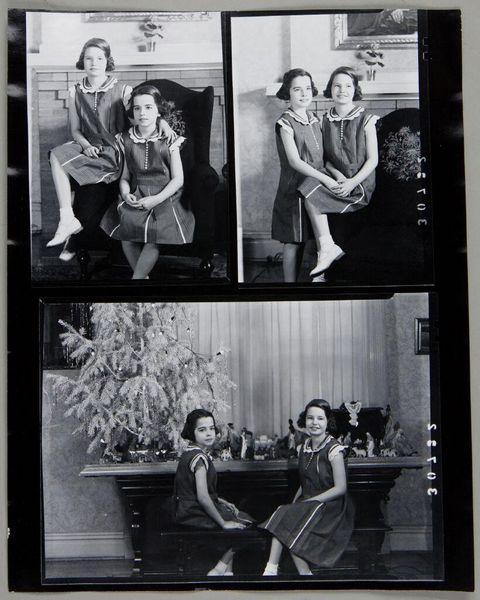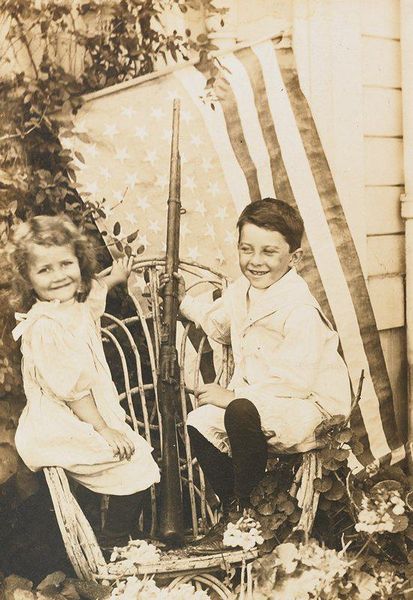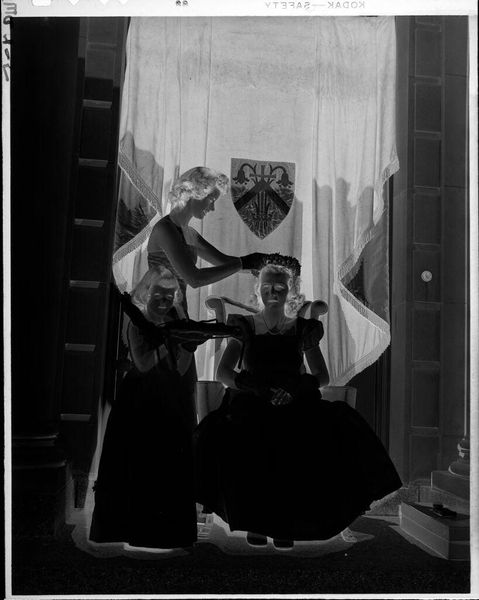
photography
#
portrait
#
contemporary
#
black and white photography
#
street-photography
#
photography
#
black and white
#
monochrome photography
#
monochrome
Copyright: Diane Arbus,Fair Use
Curator: Today we're looking at an untitled photograph by Diane Arbus, taken in 1971. Editor: The stark monochrome grabs me instantly. There’s a very directness in its recording, almost forensic. And I am thinking about film grain. Curator: Arbus often photographed those on the periphery of society, and here we see two women, likely residents of an institution, posed together in ornate hats. There's a performative element at play. Editor: I'm struck by those hats too. What does it say about their own creative agency within their restricted living situations, turning found scraps, probably even things they were tasked to do for the household like table linens into high fashion for themselves? And consider the institutions they were held in – publicly funded with real buildings that would've shaped the possibilities they would have to dress up, perform. Curator: You bring up interesting points about labor. It also highlights the social constructs around normalcy and beauty, doesn't it? Their expressions, perhaps considered unconventional, become incredibly poignant within the visual language of portraiture. Their homemade floral headgear almost crowns of something we struggle to understand. Editor: Absolutely. It prompts us to question the ethics of display itself. And technically speaking, it’s an analog photograph, isn't it? Thinking of the chemical baths to set this in monochrome in the darkroom–what chemicals, where did the photochemicals drain? What kind of labor went into making these chemical and these prints? Curator: Indeed, Arbus’s process involved a very hands-on approach in the darkroom, meticulously crafting the prints to emphasize contrast and texture, amplifying that directness you noted. The print is where the artwork *becomes*, but this is so much more than pointing a camera. Editor: Thinking about it this way illuminates a social reality – it's not only about what the picture depicts but also the systems and resources used to create it and control bodies. It feels incomplete. Curator: It certainly gives pause for thought, and her photographic gaze continues to ignite dialogue today about seeing and being seen. Editor: A truly unforgettable image.
Comments
No comments
Be the first to comment and join the conversation on the ultimate creative platform.
